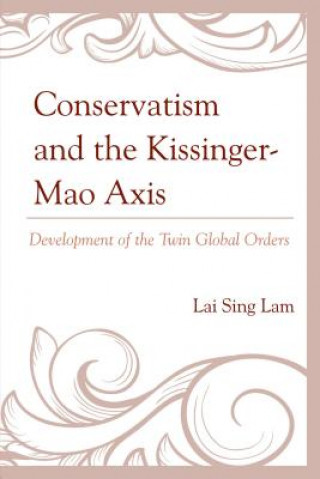
Kód: 09241067
Conservatism and the Kissinger-Mao Axis
Autor Lam Lai Sing
Kissinger's dual-purpose instrument of the U.S.- China and US-Soviet detente was devised to achieve a stable balance of power in the contemporary world in the second half of the 1960s. Stimulated by both Kissinger's doctrine and t ... celý popis
- Jazyk:
 Angličtina
Angličtina - Vazba: Pevná
- Počet stran: 236
Nakladatelství: Lexington Books, 2015
- Více informací o knize

Mohlo by se vám také líbit
-

Mansions of Fire
620 Kč -

Human Trinity
607 Kč -

Jargonaut Express
582 Kč -
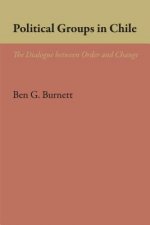
Political Groups in Chile
1096 Kč -

In Nordrhein-Westfalen lebt die nördlichste Flamingo-Kolonie der Welt
240 Kč -

Hutte
751 Kč -

Gesunde Venen, schöne Beine
553 Kč
Darujte tuto knihu ještě dnes
- Objednejte knihu a zvolte Zaslat jako dárek.
- Obratem obdržíte darovací poukaz na knihu, který můžete ihned předat obdarovanému.
- Knihu zašleme na adresu obdarovaného, o nic se nestaráte.
Více informací o knize Conservatism and the Kissinger-Mao Axis
Nákupem získáte 371 bodů
 Anotace knihy
Anotace knihy
Kissinger's dual-purpose instrument of the U.S.- China and US-Soviet detente was devised to achieve a stable balance of power in the contemporary world in the second half of the 1960s. Stimulated by both Kissinger's doctrine and the historical novel, the Romance of the Three Kingdoms, Mao's global order of tripolarity was created to feature the new U.S.-China relations in the early 1970s with his initiative of the ping-pong diplomacy through this Kissinger-Mao axis. This made his quest for a modernization revolution possible with the Western market oriented approach. Strengthening Mao's modernization program, Xiaoping's "good-neighborhood" policy was designed to induce the world to help modernize China. Vitally including Russia with the collapse of the Soviet Union, Deng's policy helped maintain a peaceful and stable international environment, though it also marked the end of Mao's global order. Perceiving the PRC's rise as a threat to its dominance in the Asia Pacific region, the U.S. containment effort was enhanced with US-Japanese collusion and siding with the Philippines and Vietnam in relevant maritime disputes with the PRC. The U.S. united with the Republic of Korea, nations in Southeast Asia, and Australia in establishing a wide-range alliance to go against the "China threat". The post-Cold War, eastward expansion of the U.S.-led NATO and the Russian determination to be a great power again, contributed to tension with the United States. The Russian desire to maintain its nuclear deterrent capability was at odds with the U.S. missile defense plans. Thus, the U.S. deployment of its missile shield in Eastern Europe as part of its strategic configuration in Alaska and the Far East was to contain Russia from both the Far East and Europe.
 Parametry knihy
Parametry knihy
Zařazení knihy Knihy v angličtině Society & social sciences Politics & government International relations
3711 Kč
- Plný název: Conservatism and the Kissinger-Mao Axis
- Podnázev: Development of the Twin Global Orders
- Autor: Lam Lai Sing
- Jazyk:
 Angličtina
Angličtina - Vazba: Pevná
- Počet stran: 236
- EAN: 9781498511391
- ISBN: 1498511392
- ID: 09241067
- Nakladatelství: Lexington Books
- Hmotnost: 514 g
- Rozměry: 239 × 160 × 24 mm
- Datum vydání: 20. May 2015
Oblíbené z jiného soudku
-

On Palestine
290 Kč -

Prisoners of Geography
276 Kč -
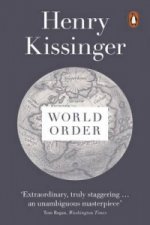
World Order
303 Kč -
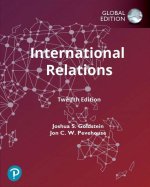
International Relations, Global Edition
2700 Kč -
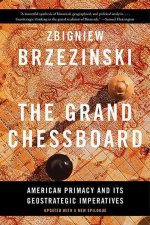
Grand Chessboard
561 Kč -
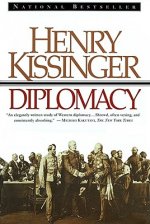
Diplomacy
487 Kč -
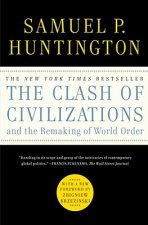
Clash of Civilizations and the Remaking of World Order
454 Kč -
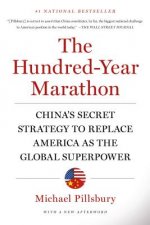
Hundred-Year Marathon
419 Kč -

The Spy and the Traitor
323 Kč -

Understanding the Intelligence Cycle
1811 Kč -
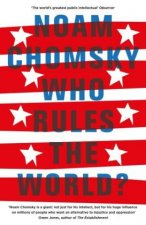
Who Rules the World?
302 Kč -
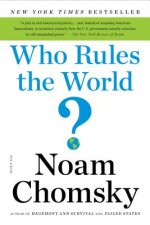
Who Rules the World?
302 Kč -

Dead Aid
429 Kč -

World Order
378 Kč -

Adults In The Room
378 Kč -

Legacy of Ashes
476 Kč -
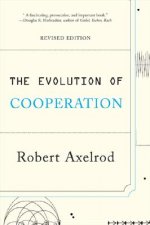
Evolution of Cooperation
471 Kč -
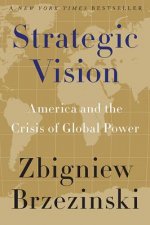
Strategic Vision
410 Kč -

Secret World
542 Kč -
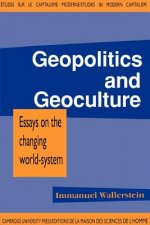
Geopolitics and Geoculture
543 Kč -
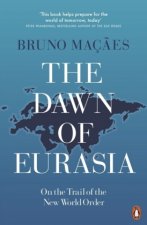
Dawn of Eurasia
302 Kč -
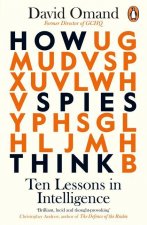
How Spies Think
323 Kč -

Gaza in Crisis
302 Kč -

Planetary Cycles Mundane Astrology
479 Kč -

OVERTHROW : AMERICA'S CENTURY OF REGIME
624 Kč -

Is the EU Doomed?
612 Kč -

Righteous Victims
593 Kč -

Directorate S
431 Kč -

Europe's Border Crisis
1121 Kč -
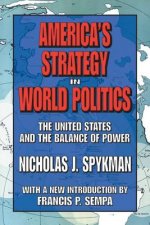
America's Strategy in World Politics
1763 Kč -

Destroying Libya and World Order
481 Kč -

amantes del fin del mundo
568 Kč -

My Nationalist Pony
854 Kč -
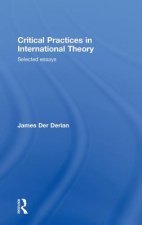
Critical Practices in International Theory
5256 Kč -

American Century and Beyond
592 Kč -

Heroic Failure
302 Kč -

Oxford Handbook of the European Union
1428 Kč -

Rise and Kill First
487 Kč -

PEACE TO END ALL PEACE
608 Kč -
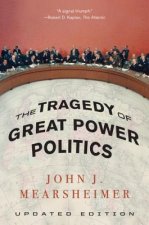
Tragedy of Great Power Politics
470 Kč -
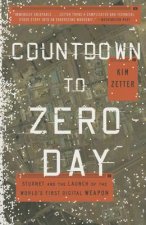
Countdown to Zero Day
401 Kč -
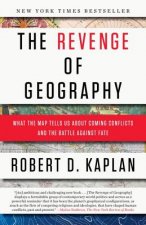
Revenge of Geography
520 Kč -
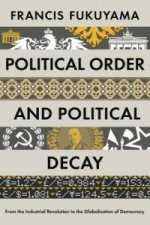
Political Order and Political Decay
410 Kč -
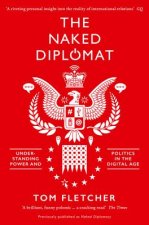
Naked Diplomat
356 Kč -

Against Our Better Judgment
317 Kč -
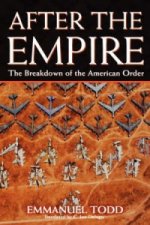
After the Empire
396 Kč -

Legacy of Ashes
517 Kč -
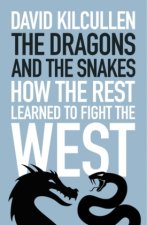
Dragons and the Snakes
794 Kč -
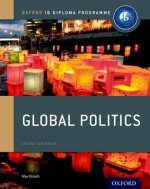
Oxford IB Diploma Programme: Global Politics Course Book
1485 Kč
Osobní odběr Praha, Brno a 12903 dalších
Copyright ©2008-24 nejlevnejsi-knihy.cz Všechna práva vyhrazenaSoukromíCookies



 Vrácení do měsíce
Vrácení do měsíce 571 999 099 (8-15.30h)
571 999 099 (8-15.30h)